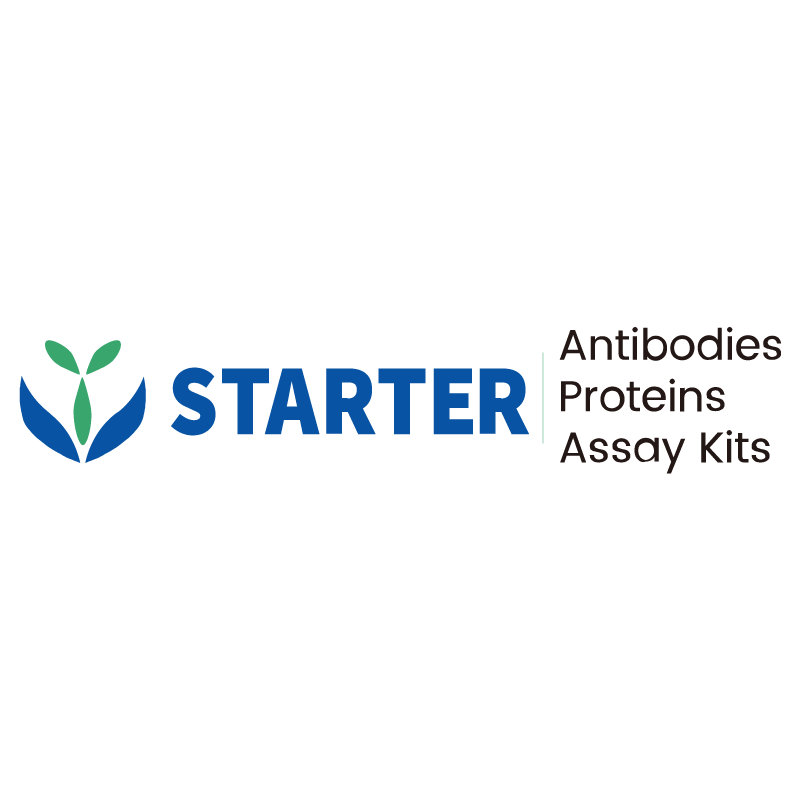WB result of KRAS (mutated GQ60GK) + (mutated Q61K) Rabbit mAb
Primary antibody: KRAS (mutated GQ60GK) + (mutated Q61K) Rabbit mAb at 1/1000 dilution
Lane 1: 293T whole cell lysate 20 µg
Lane 2: 293T transfected with empty vector whole cell Lysate 20 µg
Lane 3: 293T transfected with KRAS WT whole cell Lysate 20 µg
Lane 4: 293T transfected with KRAS(Q61K) whole cell Lysate 20 µg
Lane 5: 293T transfected with KRAS(GQ60GK) whole cell Lysate 20 µg
Secondary antibody: Goat Anti-rabbit IgG, (H+L), HRP conjugated at 1/10000 dilution
Predicted MW: 21 kDa
Observed MW: 21 kDa
Product Details
Product Details
Product Specification
| Host | Rabbit |
| Antigen | KRAS |
| Synonyms | GTPase KRas, K-Ras 2, Ki-Ras, c-K-ras, c-Ki-ras, KRAS2, RASK2 |
| Immunogen | Synthetic Peptide |
| Location | Cytoplasm |
| Accession | P01116 |
| Clone Number | S-604-4 |
| Antibody Type | Recombinant mAb |
| Isotype | IgG |
| Application | WB, IHC-P, ICC |
| Purification | Protein A |
| Concentration | 0.5 mg/ml |
| Conjugation | Unconjugated |
| Physical Appearance | Liquid |
| Storage Buffer | PBS, 40% Glycerol, 0.05% BSA, 0.03% Proclin 300 |
| Stability & Storage | 12 months from date of receipt / reconstitution, -20 °C as supplied |
Dilution
| application | dilution | species |
| WB | 1:1000 | null |
| IHC-P | 1:500 | null |
| ICC | 1:500 | null |
Background
KRAS protein is a GTPase and plays a crucial role in downstream signaling pathways. The activity of KRAS protein is regulated by the ratio of GTP to GDP bound to it. When GTP is bound to KRAS protein, it activates downstream signaling pathways, promoting cell proliferation and survival. However, mutations in the KRAS gene, such as GQ60GK, can lead to the activation of KRAS protein, resulting in the constant activation of downstream signaling pathways and promoting cancer cell proliferation and metastasis. when KRAS undergoes the Q61K mutation, it becomes constitutively activated, even in the absence of activation by EGFR or other kinases, leading to continuous cell proliferation and ultimately cancer development. The KRAS (mutated Q61K) mutation is found in various types of tumors, most notably lung cancer and pancreatic cancer. In clinical treatment, the presence of this mutation may require the adoption of specific therapeutic strategies, as some targeted drugs designed for non-mutated KRAS may be ineffective against this mutant form.
Picture
Picture
Western Blot
Immunohistochemistry
IHC shows positive staining in paraffin-embedded 293T transfected with KRAS (Q61K) cells. Anti-KRAS (mutated GQ60GK) + (mutated Q61K) antibody was used at 1/500 dilution, followed by a HRP Polymer for Mouse & Rabbit IgG (ready to use). Counterstained with hematoxylin. Heat mediated antigen retrieval with Tris/EDTA buffer pH9.0 was performed before commencing with IHC staining protocol.
IHC shows positive staining in paraffin-embedded 293T transfected with KRAS (GQ60GK) cells. Anti-KRAS (mutated GQ60GK) + (mutated Q61K) antibody was used at 1/500 dilution, followed by a HRP Polymer for Mouse & Rabbit IgG (ready to use). Counterstained with hematoxylin. Heat mediated antigen retrieval with Tris/EDTA buffer pH9.0 was performed before commencing with IHC staining protocol.
Negative control: IHC shows negative staining in paraffin-embedded 293T transfected with KRAS WT cells. Anti- KRAS (mutated GQ60GK) + (mutated Q61K) antibody was used at 1/××× dilution, followed by a HRP Polymer for Mouse & Rabbit IgG (ready to use). Counterstained with hematoxylin. Heat mediated antigen retrieval with Tris/EDTA buffer pH9.0 was performed before commencing with IHC staining protocol.
Immunocytochemistry
ICC shows positive staining in KRAS (GQ60GK) transfected HeLa cells. Anti- KRAS (mutated GQ60GK) + (mutated Q61K) antibody was used at 1/500 dilution (Green) and incubated overnight at 4°C. Goat polyclonal Antibody to Rabbit IgG - H&L (Alexa Fluor® 488) was used as secondary antibody at 1/1000 dilution. The cells were fixed with 100% ice-cold methanol and permeabilized with 0.1% PBS-Triton X-100. Nuclei were counterstained with DAPI (Blue). Counterstain with tubulin (Red).
ICC shows positive staining in KRAS (Q61K) transfected HeLa cells. Anti- KRAS (mutated GQ60GK) + (mutated Q61K) antibody was used at 1/500 dilution (Green) and incubated overnight at 4°C. Goat polyclonal Antibody to Rabbit IgG - H&L (Alexa Fluor® 488) was used as secondary antibody at 1/1000 dilution. The cells were fixed with 100% ice-cold methanol and permeabilized with 0.1% PBS-Triton X-100. Nuclei were counterstained with DAPI (Blue). Counterstain with tubulin (Red).
Negative control: ICC shows negative staining in KRAS wild-type transfected HeLa cells. Anti- KRAS (mutated GQ60GK) + (mutated Q61K) antibody was used at 1/500 dilution and incubated overnight at 4°C. Goat polyclonal Antibody to Rabbit IgG - H&L (Alexa Fluor® 488) was used as secondary antibody at 1/1000 dilution. The cells were fixed with 100% ice-cold methanol and permeabilized with 0.1% PBS-Triton X-100. Nuclei were counterstained with DAPI (Blue). Counterstain with tubulin (Red).
Negative control: ICC shows negative staining in vector transfected HeLa cells. Anti- KRAS (mutated GQ60GK) + (mutated Q61K) antibody was used at 1/500 dilution and incubated overnight at 4°C. Goat polyclonal Antibody to Rabbit IgG - H&L (Alexa Fluor® 488) was used as secondary antibody at 1/1000 dilution. The cells were fixed with 100% ice-cold methanol and permeabilized with 0.1% PBS-Triton X-100. Nuclei were counterstained with DAPI (Blue). Counterstain with tubulin (Red).


